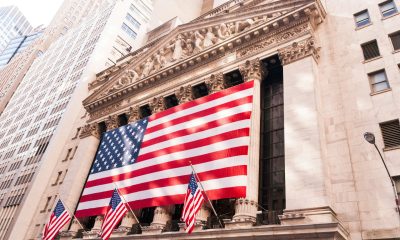Featured
Buying cheap stocks: What does cheap really mean?
Many are saying that buying cheap stocks is the way to go. However, how do we define cheap stocks in the first place?

Everyone tells you that they want to buy cheap stocks. What does that mean? There are so many metrics out there: price to sales, price to book, price to earnings or cash flow. Which are the key ones?
I think people get caught up too often looking at a few key metrics and they lose sight of the bigger picture. In the end, most little companies never become the next General Electric. They either burn out, they hit some plateau and stagnate, or they get acquired by a larger company.
Looking towards the future
When thinking of smaller companies, you really need to ask yourself: what will this company be worth a few years from now? What will a much larger company pay for this business?
Remember, acquisitions create cost savings and synergies. For this reason, an acquirer is likely to pay a lot more for a company than the broader market is willing to.
This leads to a bigger question: do this year’s earnings even matter? Probably not. Most people know roughly what this year’s earnings will look like. They even have a reasonable guess about next year’s earnings.
No one knows what will happen in three or five years. That’s where you should focus your attention. Look for businesses that can earn many times what they are going to earn this year. Look for growth.
What makes a stock cheap?
Conventional stock scans will give you lists of stocks that are cheap based on last year’s earnings. Often, they’re cheap because people do not think the earnings are sustainable.
Even if they are sustainable, is there any growth? Just because a company is trading at five times earnings, that doesn’t mean it’s cheap. You’re taking on all the risk of owning a business without much upside. Even if you’re right, will you double your money? You probably won’t triple it. That’s a lot of risk for no reason.
Remember, equities are all risk. Don’t take on that risk, unless you have the chance of earning enough to make it worthwhile. This may be counterintuitive, but companies that are actually cheap often do not seem cheap using conventional metrics. Yet, those are the ones that you want to buy.
Let’s think about a newly popular restaurant chain. Each restaurant costs $2 million to build and takes a year to build. Once built, it produces $4 million in revenues and $700,000 in profits. Pre-tax, it takes less than three years to pay for each restaurant. A 35% return on capital is a great business. It’s an amazing return for a restaurant chain. Finally, the business has $3 million in corporate expense. This is a fixed number for headquarters staff but it will slowly grow as the company grows.
There are currently 10 restaurants in the chain. You know the economics of each restaurant from speaking with management. Here are some hypothetical pre-tax estimates of what the business will look like at each milestone. All numbers in millions except restaurant count.
| Restaurants | 10 | 20 | 50 | 100 | 300 |
| Sales | 40 | 80 | 200 | 400 | 1200 |
| Margin | 7 | 14 | 35 | 70 | 210 |
| Corporate | 3 | 5 | 9 | 15 | 30 |
| Pre-Tax | 4 | 9 | 26 | 55 | 180 |
If the market cap is 50 million at 10 restaurants, is it cheap? At first glance, the stock looks fairly valued at 12.5 times pretax earnings. However, if the company can get to 50 restaurants, it is only selling at 2 times pretax earnings. You’d make at least 5 times your money.
Can this restaurant concept support 50 restaurants? Can management execute on the plan? How long will it take to get to 50 restaurants? How much additional capital will be needed to get there?
Here’s what makes this interesting. It costs money to make money. Restaurants do not magically appear.
Let’s say that it costs 2 million to build each restaurant. That’s a static number. However, there are other costs that are not included. You need to hire and train employees. You need to advertise. You need to hire middle management to manage your new restaurants and do all the dozens of things that are involved in growing a business. You incur these costs before the restaurant has its first customer.
Let’s say it costs $300,000 in one-time expense per restaurant. If you are going to grow from 10 to 15 restaurants in a year, it will cost you another 1.5 million that year. Instead of earning 4 million, you are only earning 2.5 million. Your stock is trading at 20 times pretax earnings. Is it cheap?
If it can get to 50 restaurants, it is cheap and you will make a lot of money on your investment. If it can get to 300 restaurants in the next decade, you will make a fortune.
Today, it’s 20 times pre-tax earnings because it is growing. It’s 12.5 times static earnings. But if you believe in the business, it’s 2 or 3 times earnings looking out five years.
Rapidly growing businesses rarely show much income. The income only appears when the growth rate dramatically slows. This is a very key point when investing in smaller companies.
I believe in looking out five years. The real question is if management can deliver. If they can, you can own it for a decade or more. Ignore this year’s earnings. All that matters is future earnings.
Focus your energies on making sure that it’s a great business. Make sure the restaurant remains popular. Make sure the restaurant economics stay the same or improve. Make sure that management doesn’t lose focus. Ignore this year’s earnings.
—
DISCLAIMER: This article expresses my own ideas and opinions. Any information I have shared are from sources that I believe to be reliable and accurate. I did not receive any financial compensation in writing this post, nor do I own any shares in any company I’ve mentioned. I encourage any reader to do their own diligent research first before making any investment decisions.

-

 Crowdfunding1 week ago
Crowdfunding1 week agoCrowdfunding Grants Open for Business Projects Until January 2026
-

 Biotech1 day ago
Biotech1 day agoHaptena Therapeutics Launches with €3 Million Funding to Target KRAS-Mutated Tumors
-

 Crypto1 week ago
Crypto1 week agoBitcoin in 2025: Mainstream Momentum, Price Weakness, and a Pivotal Year Ahead
-

 Africa1 day ago
Africa1 day agoCasablanca Stock Exchange 2025: A Pivotal Year Toward Financial Maturity


























You must be logged in to post a comment Login